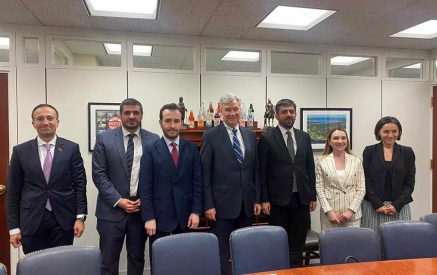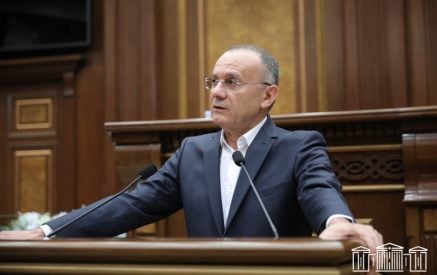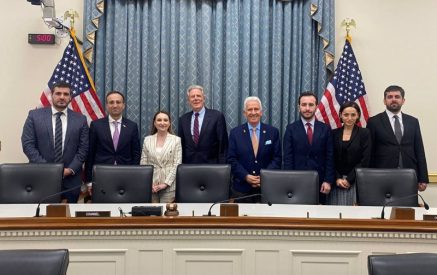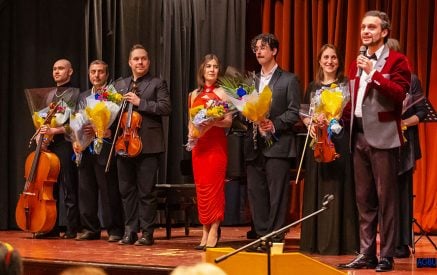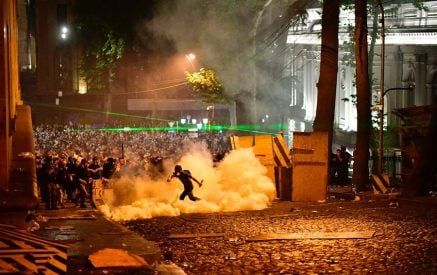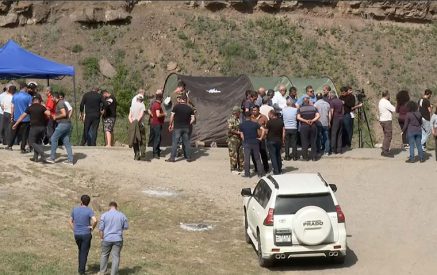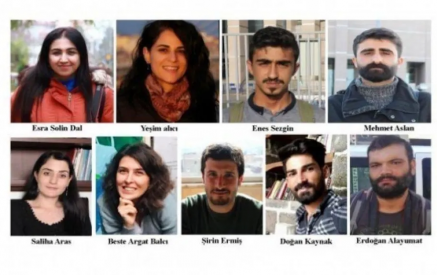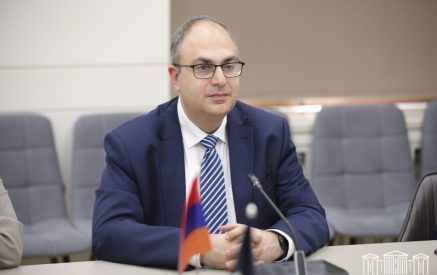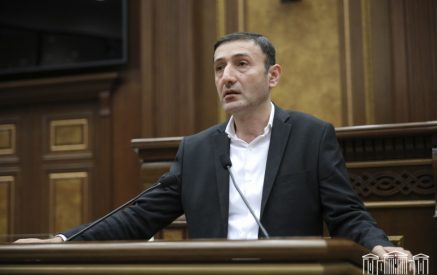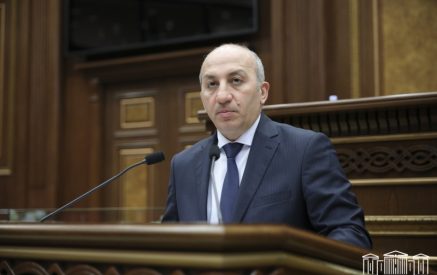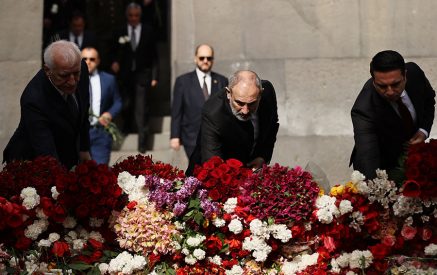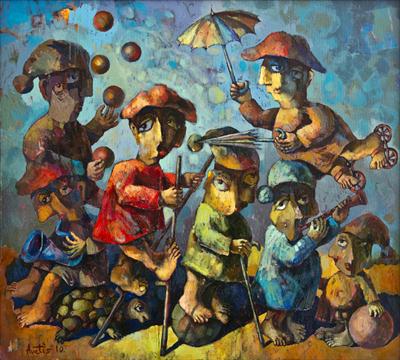BEIRUT: With “Still-Life with Old Clock” onlookers are confronted with a dazzling work. The painting depicts a gray coat, pomegranates fallen from a fruit basket on a shelf above the coat, an old clock ticking and the top part of a chair.
Described in such a manner, this 90 x 50 cm oil-on-canvas by Armenian artist Tigran Barkhanajian does not sound terribly appealing.
However, Barkhanajian’s technique is what makes the work unique. At first sight, viewers may think they are looking at a photograph. The clarity and details with which the artist paints are stunning. The artwork is neat, precise and brings to light minutiae – something photographers can do as well.
Barkhanajian’s painting is part of Arame Art Gallery’s exhibition, “Masters of Contemporary Renaissance,” now up at Beirut Souks. A collection of 52 paintings by Ruben Abovian, Tigran Barkhanajian, Aramazd Petrosian and Avetis Khachatrian are on display.
Read also
Founded in Yerevan in 2003 by art collector and promoter Aram Sargsyan, the Arame Art Gallery opened a branch in Gemmayzeh’s Tekian Center earlier in the year, with the aim of specializing “in original artworks of the best modern Armenian artists,” as is written in the exhibition catalogue.
Most of the works on show represent figuration – as derived from real objects – and portraiture. They have similarity with Renaissance era painting in their expressive gestures, realism, the emphasis on individualism and what is called chiaroscuro – the combination of lights and shadows. But the contemporary aspect lies in the artist’s personal rendering of a classical situation.
At their best, Ruben Abovian’s paintings illustrate the relationship between contemporary art and Renaissance characteristics. His 30 oil-on-canvas works portray men, women and children gathering in situations such as carnivals, diners, and concerts. Such moments were commonly shown in the Renaissance period, from the 14th to the 17th centuries, as they depicted the individual’s daily life and emphasized the importance of the human being.
Abovian’s technique – just like Barkhanajian’s – is also interesting to analyze. Most of the faces of his characters seem to be erased, or less detailed than their bodies. It is as though Abovian tried to represent motion, as though his characters were moving inside the canvas. His brushstrokes enhance the activity of these figures.
In his oil-on-canvas works “Kiss No. 1” and “Kiss No. 2,” Abovian painted similar scenes in which two men are trying their best to seduce a woman. One is playing the violin, while the other is kissing the lady on her cheek. In the first opus, viewers notice the presence of a cherub on the upper right part of the canvas. On the second piece, the cupid is red, as though he morphed into his evil twin. Only then do we realize that this cherub represents lust – also emphasized by the woman’s nudity, as if she is giving in to the kisses and seduction.
Aramazd Petrosian’s six oil-on-canvas pieces are classical in comparison to the other works displayed in the venue. In his 100 x 85 cm “Confession,” a woman is sitting in a red dress, holding a viola in her left arm. A man is standing by her side, holding an old of a violin. They may be part of an ensemble. There is no clue on the type of confession, as the title suggests. The presence of a devil-looking creature between the figures may suggest the importance of desire and lust in Petrosian’s painting. Snakes, cherubs and devil-like figures were much used in Renaissance art to express seduction, love and romance.
Avetis Khachatrian’s artwork is distinct from the other works. His eight oil-on-canvas paintings are filled with vivid reds, greens and oranges. In his 90 x 100 cm “Fairy Tale of Dwarfs,” seven small characters are juggling, playing music and perched on stilts. Khachatrian’s somewhat surrealistic painting has similarities with cubism, in the way the characters’ faces are painted, in the way the eyes look at the viewers while the noses and chins are pointed to the side.
But what is intriguing is the difference between the title and these dwarfs’ eyes. A “Fairy Tale” should be enchanting, jolly and dreamy. However, the dwarfs all look sad, almost pitiful – as though seeking the viewer’s help.
“Masters of Contemporary Renaissance” is now up at Beirut Souks until Dec. 23. For more information, please call 01-567-537.
(The Daily Star :: Lebanon News :: https://www.dailystar.com.lb)




